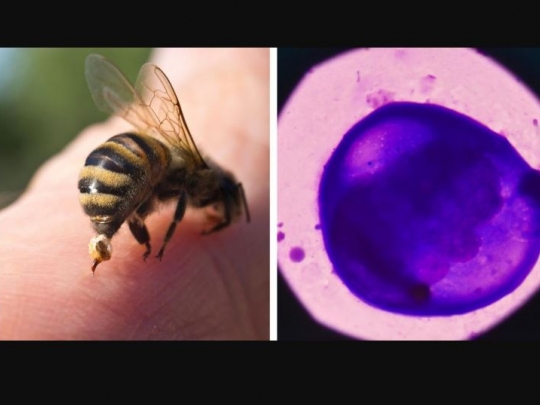Honeybee Venom Induces 100% Breast Cancer Cell Death

Ever thought that it would be great if honeybees could provide us with more than just some honey? Well, scientists from Harry Perkins Institute of Medical Research have already come up with something astonishing.
In a study published in the journal Nature Precision Oncology, they found out that a specific component in honeybee venom can fight against certain forms of breast cancer, such as triple-negative breast cancer, pretty effectively.
Don't be fooled by the name, as it is not an all-harming venom of any sort. It presents benefits when used for treating several central nervous system diseases, inflammation, and has even been found to challenge HIV.
Bumblebees vs. honeybees
At first, 312 bumblebees and honeybees' venom were compared to see if they had a similar impact. However, bumblebees failed the mission.
"The bees were put to sleep with carbon dioxide and kept on ice before the venom barb was pulled out from the abdomen of the bee and the venom extracted by careful dissection," Dr. Ciara Duffy said, who spent a long time investigating the potential benefits of the venom.
An active compound existing in honeybee venom has reportedly killed the resistant cancer cells. Usually, intense cancer treatments end up damaging the healthy cells while doing their intended job. This component had a very little harming effect on healthy cells.
A potent component
Testing the venom on different clinical subtypes of breast cancer, it was seen that it only took 60 minutes for the melittin compound to disrupt the integrity of cell membranes. Imagine how fast the rest of killing process would be.
Dr. Duffy was also curious about what would happen if melittin was combined with already existing chemotherapy medications. Even more potent results were seen afterward.
"We found that melittin can be used with small molecules or chemotherapies, such as docetaxel, to treat highly-aggressive types of breast cancer. The combination of melittin and docetaxel was extremely efficient in reducing tumor growth in mice," she explained.
As expected, the progress is at the bottom of the ladder. Further investigation is needed on how to deliver the component to the human body in a suitable dose and to check for possible toxicities.
- Source : Deniz Yilmaz


















